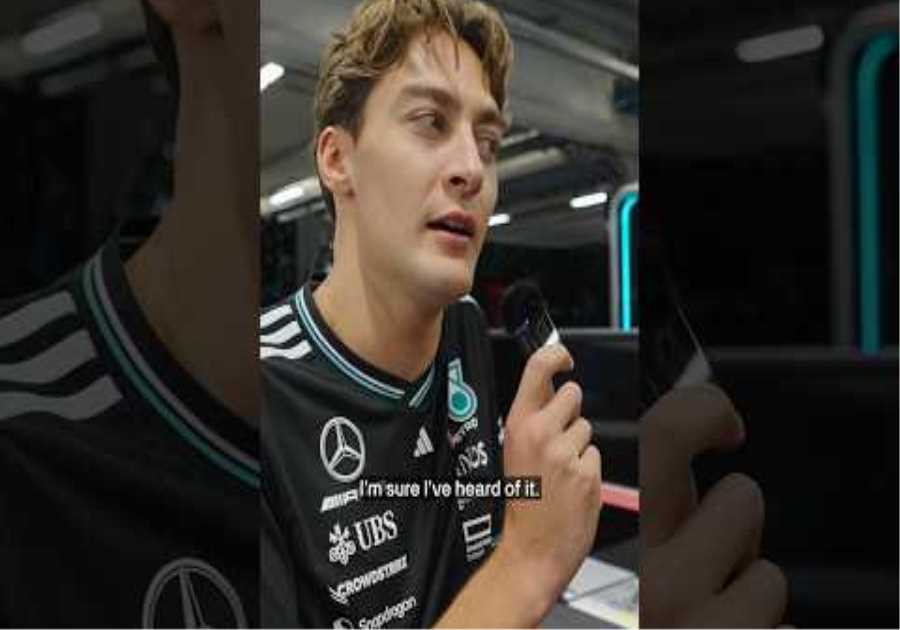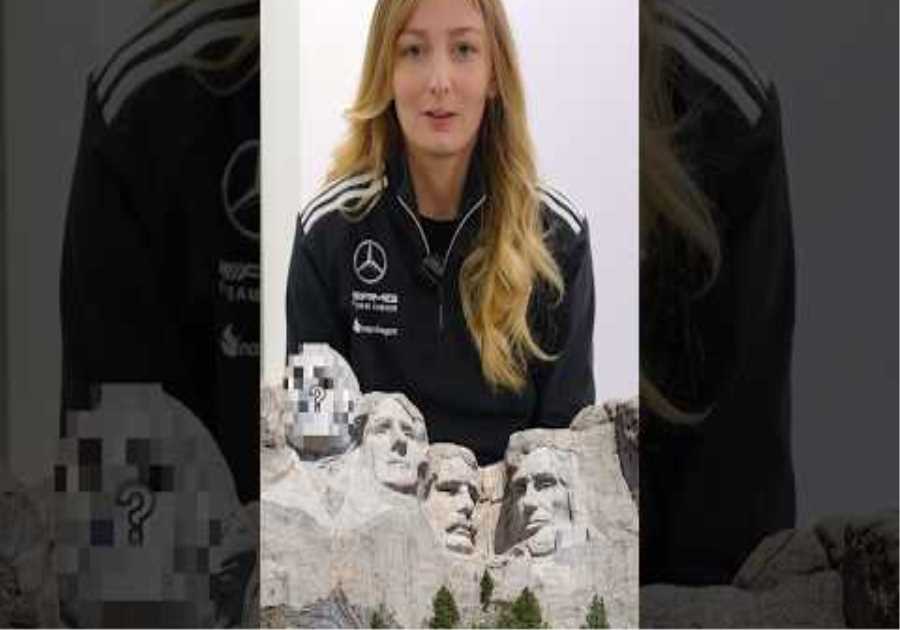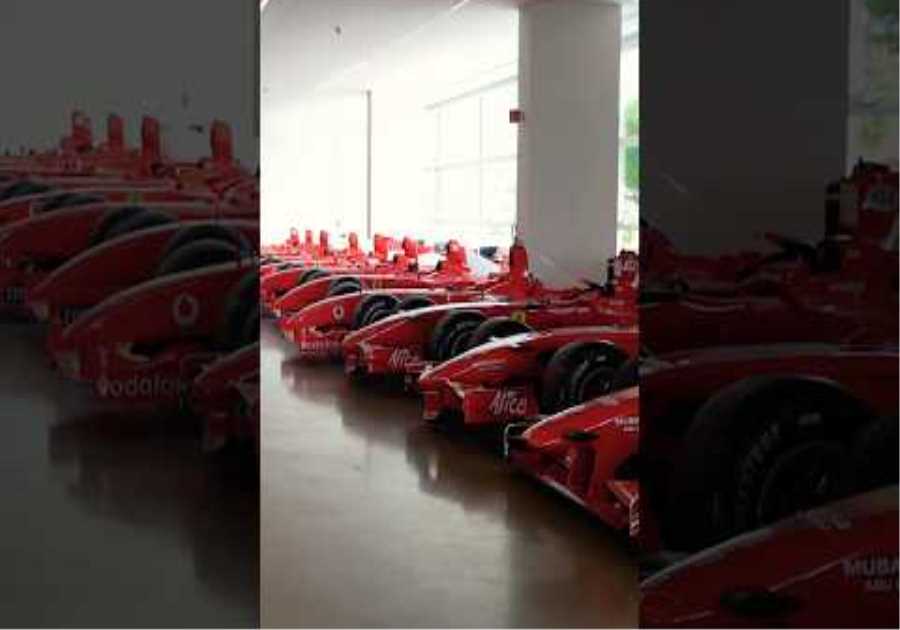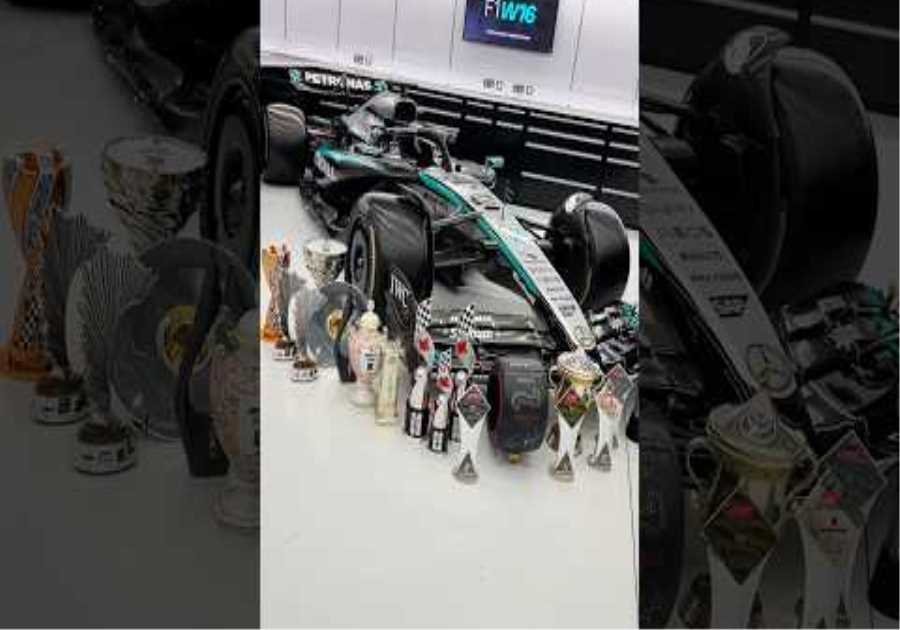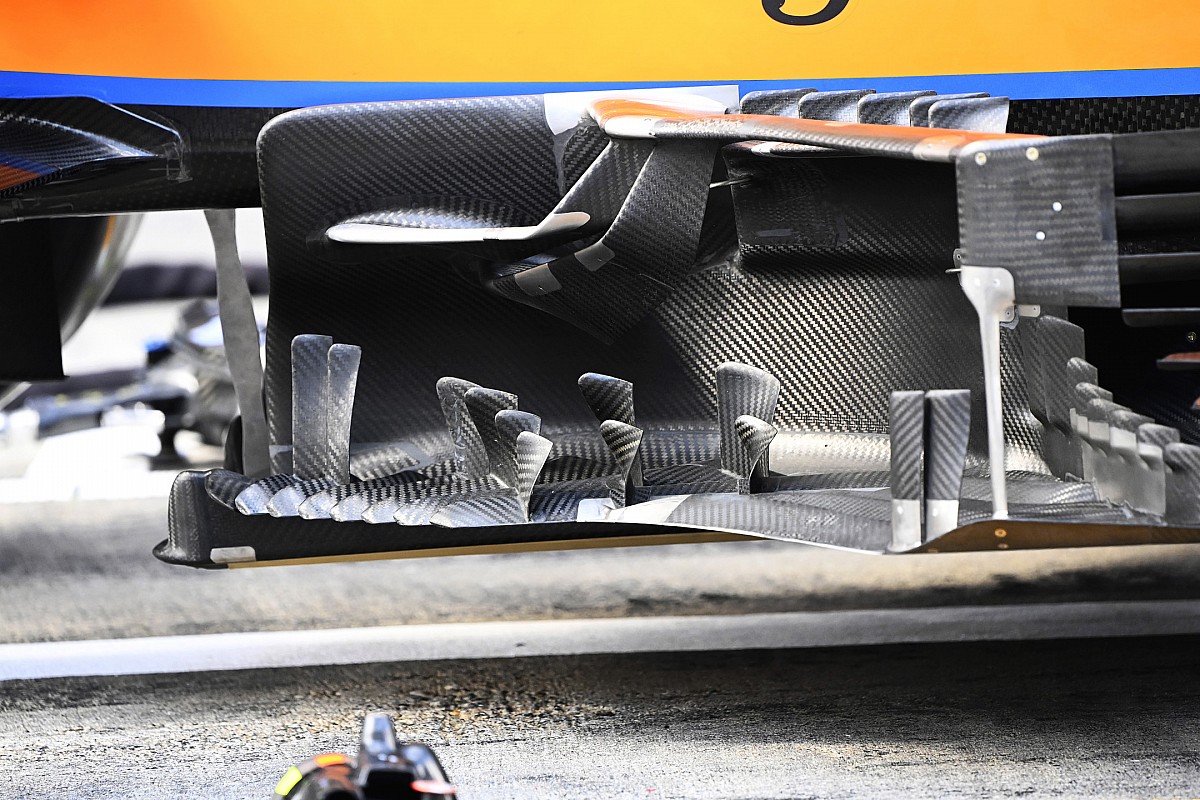
Ross Brawn, along with the Formula 1 technical working group, immediately identified the complex aerodynamic solution as one of the changes needed to reduce the aerodynamic wake of the cars and contribute to a closer race in the future.
In recent years, the bargeboards have become more and more complex, driven by the openness of the regulations in this region – and equipped with the finest details by the end of 2021.
The bargeboard had more humble beginnings, so maybe it is time to think about how it started in Formula 1 and how it evolved over time.
The McLaren MP4 / 8 was the first F1 car to come out with what we call a bargeboard, a simple, one-piece affair that mounts between the front suspension and the side pods. While these tags could be seen on the car at the first race of the season in Kyalami, they were missing when the team arrived in Brazil for round two of the championship.
They returned to the European Grand Prix in Donington, the site of Ayrton Senna’s rainy weather masterclass in which the Brazilian lost a starting position in fourth but finished the first lap in the lead after overtaking Michael Schumacher. Karl Wendlinger, Damon Hill and Alain Prost.
But although McLaren innovated early on, Benetton also reached out to Donington with its own bargeboard design – although McLaren believed that its rival team’s design didn’t exactly conform to the rules of the law.
Ayrton Senna, McLaren Ford MP4 / 8
Photo by: Sutton Images
Former McLaren aerodynamicist Henri Durand told Autosport in 2020: “My greatest satisfaction would be with the MP4 / 8 when we go to South Africa on a bargeboard – and one race later Benetton copied it! In all honesty, there was a bit of a debate about interpreting the rule with us was perfectly legal, absolutely legal, because if you look at the car from below, there was no hole, the contour of the various shadowplates, etc. There was no hole between the rear tangent of the front wheel and the front tangent of the rear wheel.
“Benetton didn’t do that. They had their attachments in the front and back, which means that if you look at the car from below, there was a big hole that put my makeup off, Charlie [Whiting] let that happen. Anyway, we saw that we were very, very innovative – and one race later we copied it from Benetton. And a few races later they all copy it. That was very satisfying. “
The bargeboards didn’t reappear until Monaco and would reappear on the Hungaroring, suggesting the team used them on tracks that required a slightly different aerodynamic configuration – especially at the upper end of the downforce range.
The bargeboards helped reposition the airflow around the rear of the car and rotate the airflow in front of the side pods and floor to improve performance at lower speeds.
The MP4 / 8 had what we think was a traditional bargeboard, but it could be argued that there were previous examples where teams in the 80s used a shorter caster deflector behind the front wheel.
After McLaren’s use of bargeboards in 1993, it wasn’t long before the other teams saw the merits of using this region of the car as a means of improving overall aerodynamic performance.
For example, Ferrari tried to solve some issues with the original design of the 412T1’s side pods, it also incorporated bargeboards into its design to optimize airflow around them (above).
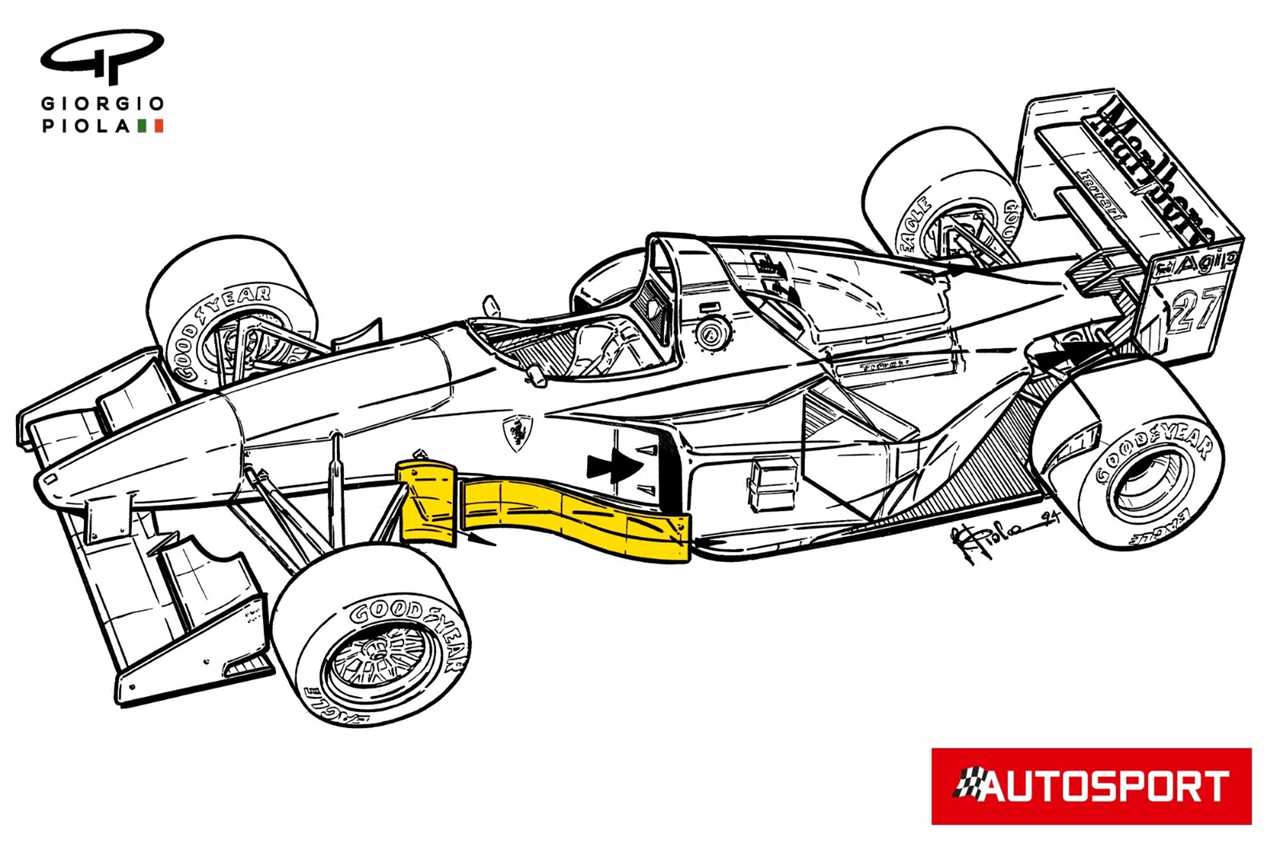
Ferrari 412T1
Photo by: Giorgio Piola
In the period that followed, the teams developed their bargeboard solutions in line with the ever-changing aerodynamic developments and the ever-changing landscape of regulations.
Perhaps the most controversial moment to include bargeboards was in 1999, when Mika Häkkinen battled Eddie Irvine for the drivers’ title in a duel that would end in Suzuka until the last race of the season – but only after the FIA made its own decision of that last race in Malaysia.
Both Ferrari drivers had been disqualified from the Malaysia Grand Prix when it was found during the technical inspection after the race that the bargeboards of their F399 did not comply with Article 3.12.1 of the technical regulations.
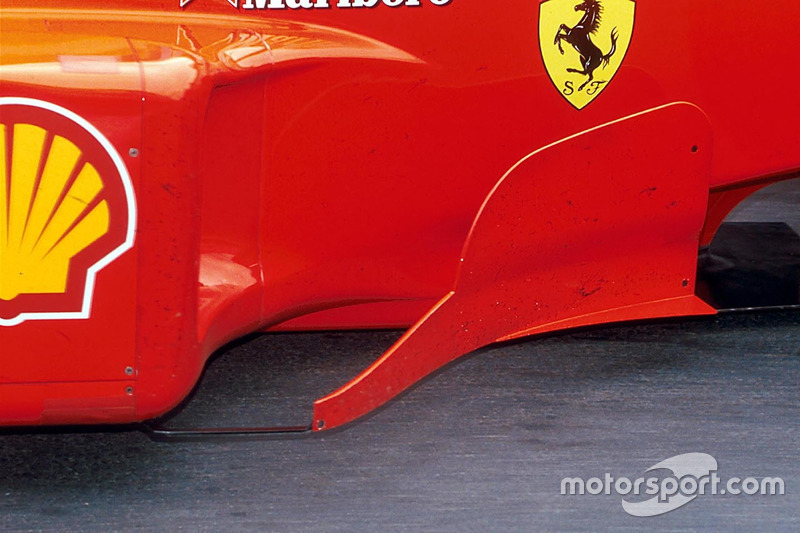
The Ferrari Barge Board that caused her disqualification
Photo by: Sutton Images
3.12.1 All suspended parts of the vehicle that are more than 33 cm behind the front wheel center line and more than 33 cm in front of the rear wheel center line and are visible from below must form surfaces that lie on one of two parallel planes, the reference plane or the step plane. This does not apply to visible parts of rear-view mirrors, provided that each of these areas does not exceed 90 cm² in a horizontal plane projected above the vehicle. The step plane must be 50 mm above the reference plane.
This requires that any part that can be seen between the dimensioning criteria under the car be on either the reference or step plane, which means that no part can exist above these planes unless they are shadowed below. In the case of Ferrari, a section of the footplate of the bargeboard was missing from the reference plane and, viewed from below, the main vertical surface was visible.

Ferrari F399 floor and bargeboard detail
Photo by: Giorgio Piola
Ferrari argued that this was a manufacturing defect and there was no intention of undermining the performance enhancement regulations and further questioned the FIA’s methods of measuring legality, denying that it was within the tolerance of 3.12.6 of the regulations was +/- 5 mm instead of the 10 mm suggested by the stewards.
How the bargeboard has evolved over time
In the years that followed, the designs became more and more complex as the teams looked for ways to tap into the capabilities of the surrounding structures and the bargeboards themselves and optimize them in harmony with one another.
When Formula 1 entered a new phase in 2009, the sport had been looking for ways to shape the regulations to enable closer races and improve overtaking maneuvers. The small technical working group entrusted with this task had very limited resources, especially compared to those working on Regulation 2022.
Nonetheless, they identified key areas of the car that needed to be changed, with dramatically altered dimensional criteria for the front and rear fenders, a significant trimming of the aerodynamic furniture that had grown around the rear of the car, and the removal of the bargeboards.
The teams drew the line here, however, and stepped in when some changes were made to the regulations, including a boxing region that allowed them to continue to harness the power of the bargeboard, albeit in a much more restricted manner.
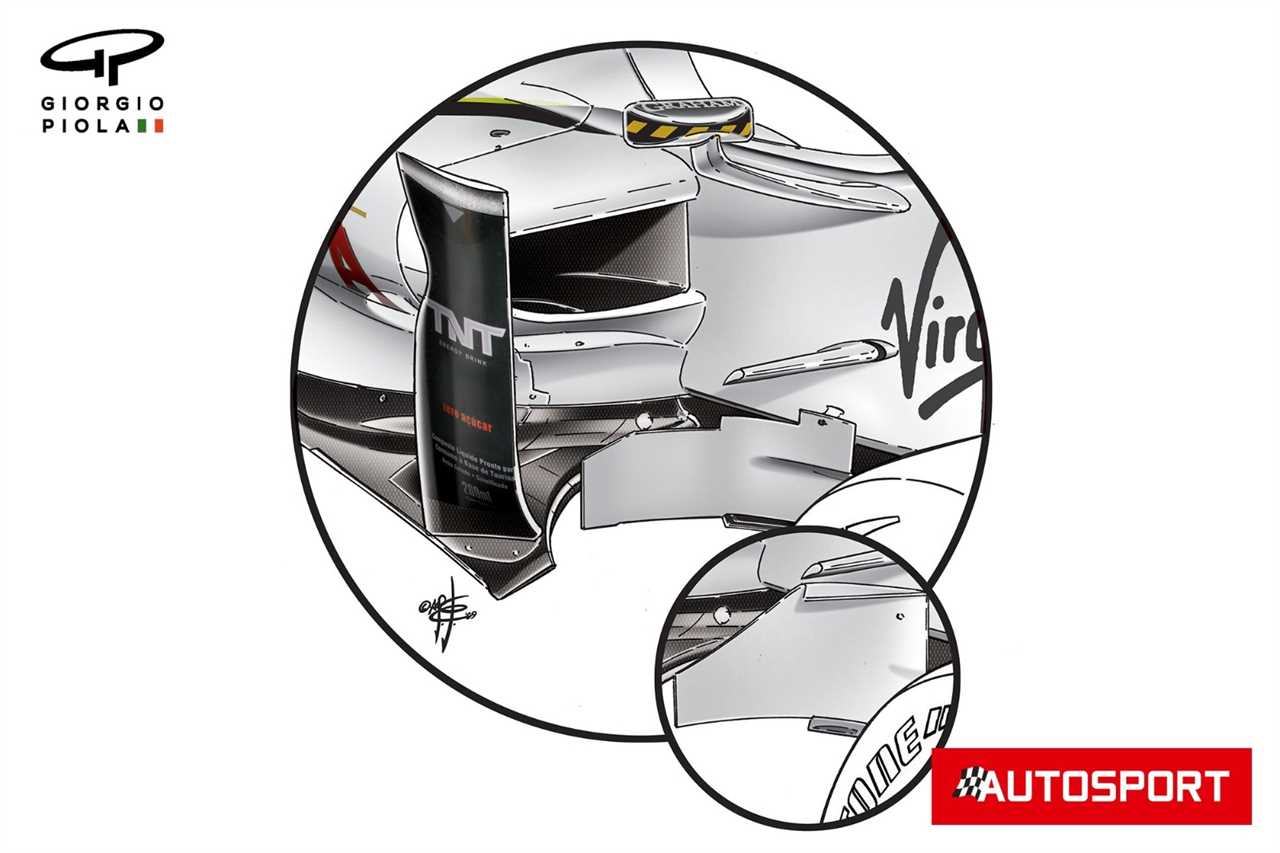
Photo by: Giorgio Piola
The BrawnGP BGP001 was the standout car of the season when Jenson Button took the drivers ‘championship and the team the constructors’ crown. Although resources were tight throughout the campaign, the bargeboards were given a certain focus, with the slightly taller, triangular element (insert) being swapped for the tiered and shorter version later in the season.
When Formula 1 entered the hybrid era, the regulations were changed again in 2014, but with some aerodynamic changes to the regulations and the removal of blown diffusers, the cars’ overall downforce was reduced.
In addition, an increase in weight in connection with the introduction of the engines meant that this generation of vehicles was significantly slower in terms of lap times.
To counteract these problems, the FIA has drawn up plans to help the teams make up for lost lap time with the new regulations that come into force in 2017.
When bargeboards went wild
Bargeboards were one area where the FIA decided to loosen the noose on designers as part of the regulations revision by providing a much larger box area to place bodies.
Not only did this result in much larger bargeboards, but also much more complex shapes and interconnecting structures as the teams looked for ways to connect the bargeboards to surrounding physical structures, such as the turning vanes and extended side box deflectors, to make them work more harmoniously …
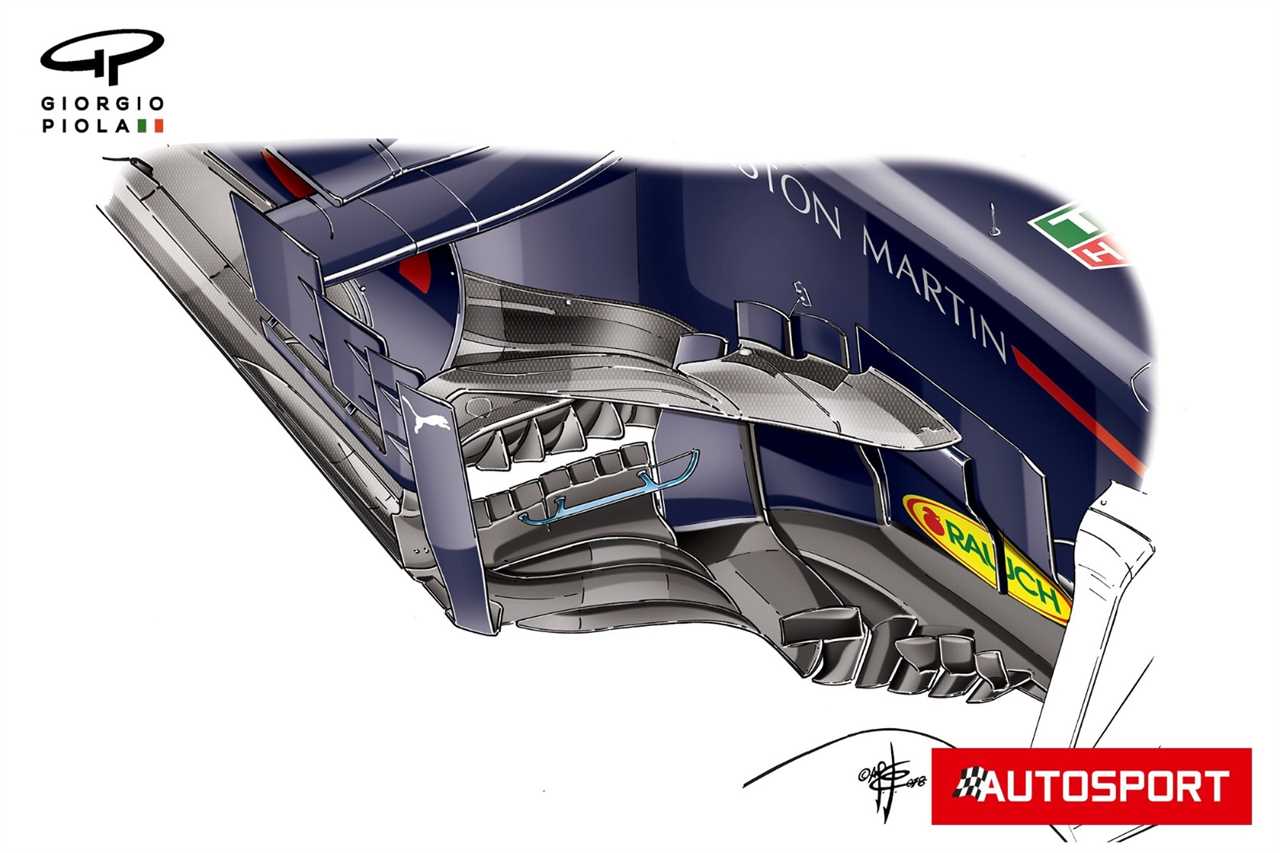
Red Bull RB14 Bargeboards, 2018
Photo by: Giorgio Piola
Many of the teams started with a trick that allowed them to make slots in the surface of the bodywork at the reference plane, resulting in a much more aggressive and detailed bottom element.
To do this, they added slots in the surfaces at the top, which meant they couldn’t conflict with the same problem Ferrari had in 1999 that they were complying with the regulations.
To curb the teams a bit, the FIA made some subtle changes to the regulations for 2019 and again the bargeboards were on the agenda, although it could be argued that the changes did not go far enough to reduce quantitative performance.
By reducing the permissible height of the assemblies by 150 mm, the board gave 100 mm additional freedom in the area before the start of the bargeboards in the period 2017-18.
And while some are glad that the FIA finally got rid of bargeboards for 2022, it’s hard to argue that if they were hung in a gallery with other beautiful artwork they would be out of place …

Photo by: Giorgio Piola


